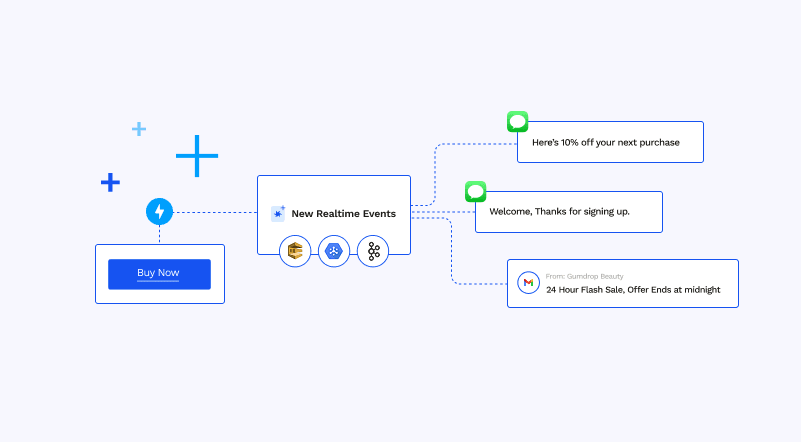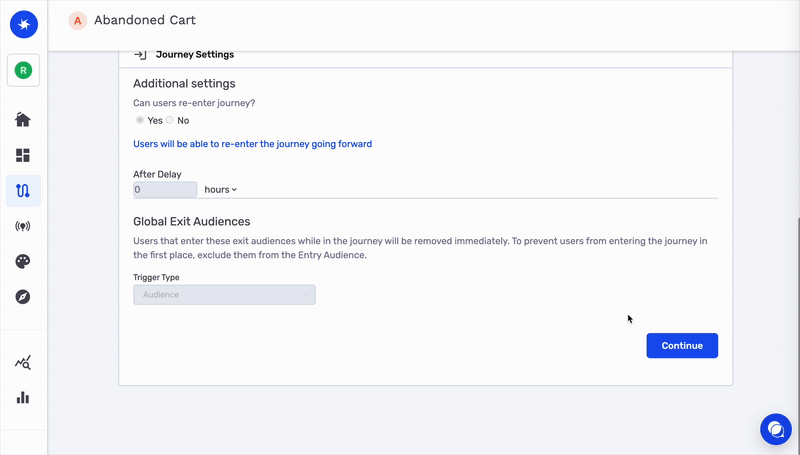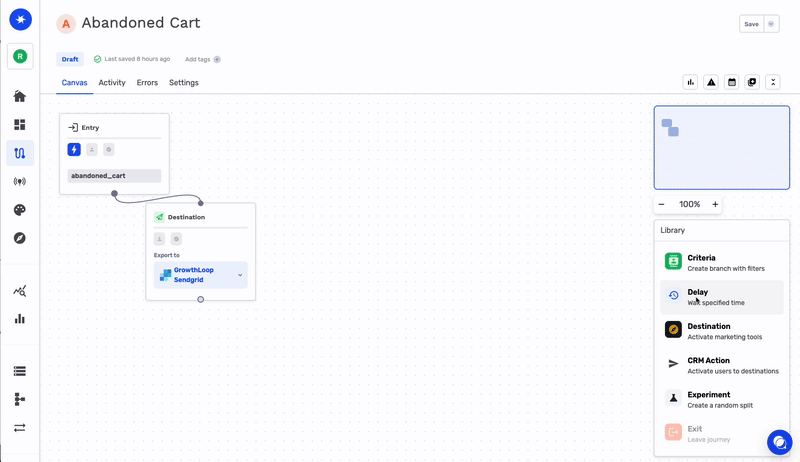Real-time and composable data haven’t been friends
Traditionally, marketing in real-time has faced one major challenge: context. Marketers face a frustrating tradeoff between two incomplete solutions.
Deliver fast, generic messages powered by incomplete and fragmented data?
Or send personalized offers that are slowed down by disconnected data across marketing tools?
Either way, marketers have been forced to choose between speed and context.
Marketing clouds can handle speed in the form of real-time marketing across channels. But they lack access to deeper data from your data cloud that gives marketers the full picture of your customer, like purchase history or loyalty status. As standalone SaaS platforms, they’re built separately from your existing data infrastructure, which means that they can’t query your warehouse directly, adding latency and data duplication.
Without contextual personalization from the data cloud, a VIP customer might get the same message as a first-time customer, creating a disconnected, negative experience that could lead to churn.
Reverse ETL (Extract, Transform, Load) tools have access to your enterprise cloud and allow your marketing team to access the most critical customer data, with information like transaction history, engagement, and demographic attributes. But these tools also rely on batch data processing to sync that cloud data into your marketing orchestration tools, and these ETLs are usually scheduled at night, once a day. This is great for data accuracy and reporting, but not as much for reacting to customer events in the moment.
By the time the data has synced to your marketing orchestration tool, it’s stale — and worse, the moment of high intent has passed. Your customer is gone, and your ability to deliver the perfect message is too late to matter, resulting in lost revenue.
Over time, continuously missing opportunities to deliver the personalized, customer-centric experiences that drive revenue and loyalty adds up.
We believe that there’s a better way to leverage speed and data context, together.




